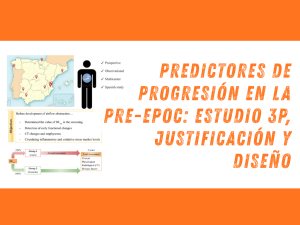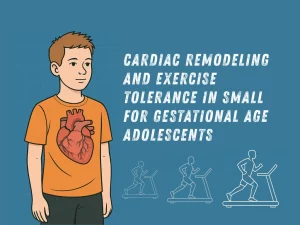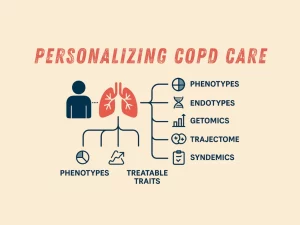Physical activity and body mass related to catch-up lung function growth in childhood: a population-based accelerated cohort study

Objective: Identifying Predictors of Catch-Up Lung Function Growth in Childhood
The existence of catch-up lung function growth and its predictors is uncertain. We aimed to identify lung function trajectories and their predictors in a population-based birth cohort.
Methods: Assessing Lung Function Trajectories in a Population-Based Cohort Study
We applied group-based trajectory modelling to z-scores of forced expiratory volume in 1 second (zFEV1) and z-scores of forced vital capacity (zFVC) from 1151 children assessed at around 4, 7, 9, 10, 11, 14 and 18 years.
Multinomial logistic regression models were used to test whether potential prenatal and postnatal predictors were associated with lung function trajectories.
Results: Physical Activity and BMI at Age 4 Linked to Catch-Up Lung Function Growth
We identified four lung function trajectories: a low (19% and 19% of the sample for zFEV1 and zFVC, respectively), normal (62% and 63%), and high trajectory (16% and 13%) running in parallel, and a catch-up trajectory (2% and 5%) with catch-up occurring between 4 and 10 years.
Fewer child allergic diseases and higher body mass index z-score (zBMI) at 4 years were associated with the high and normal compared with the low trajectories, both for zFEV1 and zFVC.
Increased children’s physical activity during early childhood and higher zBMI at 4 years were associated with the catch-up compared with the low zFEV1 trajectory (relative risk ratios: 1.59 per physical activity category (1.03–2.46) and 1.47 per zBMI (0.97–2.23), respectively). No predictors were identified for zFVC catch-up growth.
Conclusion: Catch-Up Lung Function Growth Influenced by Early Physical Activity and BMI
We found three parallel-running and one catch-up zFEV1 and zFVC trajectories, and identified physical activity and body mass at 4 years as predictors of zFEV1 but not zFVC catch-up growth.
Authors
Sarah Koch, Gabriela Prado Peralta, Anne-Elie Carsin, Alicia Abellan, Celine Roda, Maties Torrent, Carmen Iñiguez, Ferran Ballester, Amparo Ferrero, Carlos Zabaleta, Aitana Lertxundi, Mònica Guxens, Martine Vrijheid, Jordi Sunyer, Maribel Casas, Judith Garcia-Aymerich
Read more details at
Categorías asociadas al artículo
Noticias relacionadas

Predictores de progresión en la pre-EPOC: estudio 3P, justificación y diseño
Conoce el estudio 3P que analiza los factores que predicen la progresión de la pre-EPOC a EPOC en fumadores con espirometría normal.

Cardiac remodeling and exercise tolerance in small for gestational age: a follow-up cohort study from preadolescence into adolescence
This follow-up cohort study explores cardiac remodeling and reduced exercise tolerance in adolescents born small for gestational age, highlighting long-term cardiovascular implications.

Personalizing COPD care: phenotypes, endotypes, GETomics, the the trajectome, syndemics and treatable traits
Discover how personalized COPD care integrates phenotypes, endotypes, GETomics, trajectome, syndemics, and treatable traits to improve patient outcomes.
Artículos
Lung function
- 759688· Prof Eric Melen et Al. – Lung-function trajectories: relevance and implementation in clinical practice.
- 769289·Caspar Schiffers, Rosa Faner, et al. Supranormal lung function: Prevalence, associated factors and clinical manifestations across the lifespan.
- 769491·Tamara Cruz, Núria Mendoza, Gema M Lledó, Lídia Perea, Núria Albacar, Alvar Agustí, Jacobo Sellares, Oriol Sibila, Rosa Faner. Persistence of a SARS-CoV-2 T-cell response in patients with long COVID and lung sequelae after COVID-19
- 769799·Alvar Agusti, Peter G. Gibson, Vanessa M. McDonald. Treatable Traits in Airway Disease: From Theory to Practice
- 778797· Xavier Alsina-Restoy, Rodrigo Torres-Castro, Yolanda Torralba García, Felip Burgos, Joan Albert Barberà, Àlvar Agustí, Isabel Blanco Does arterial oxygenation during exercise add prognostic value in pulmonary arterial hypertension?
Imagen desarrollada DALL·E y Canva
